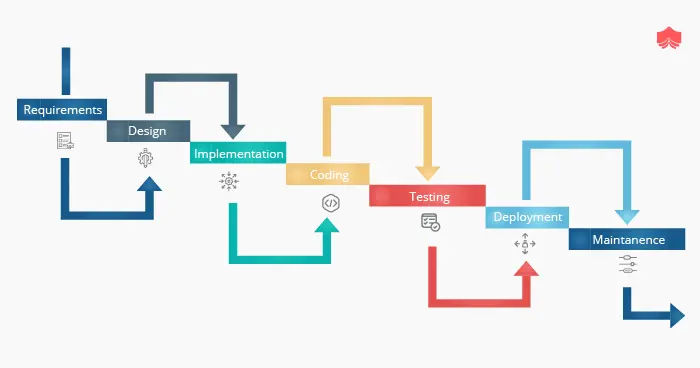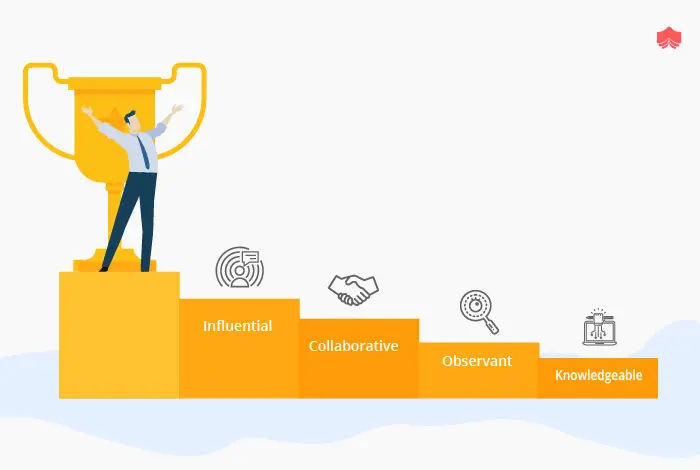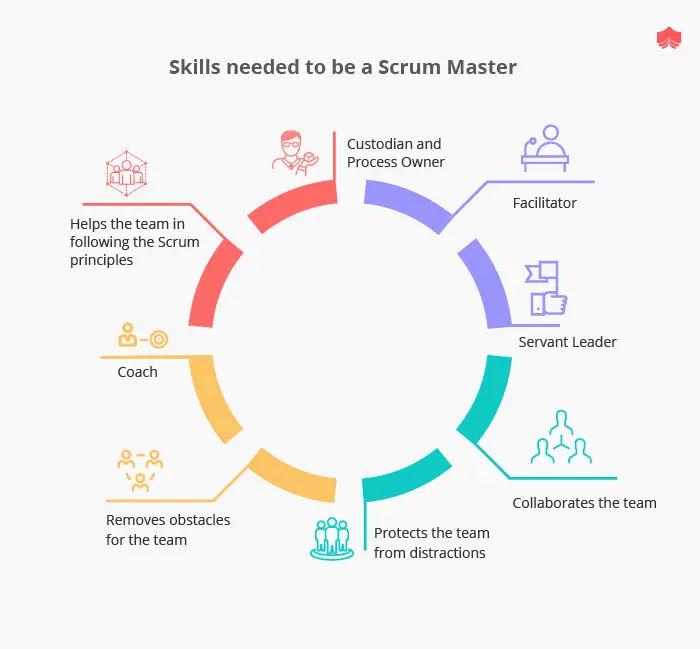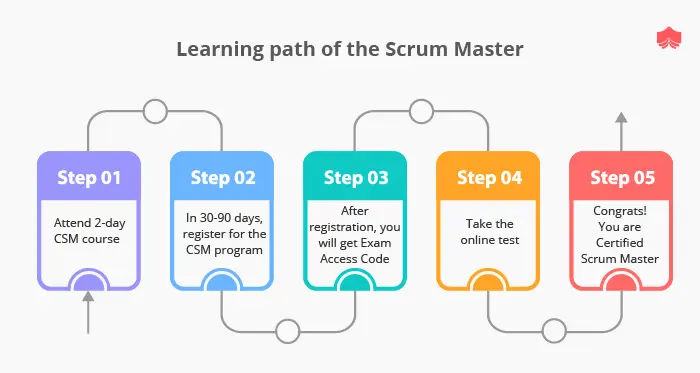- Blog Categories
- Project Management
- Agile Management
- IT Service Management
- Cloud Computing
- Business Management
- Business Intelligence
- Quality Engineer
- Cyber Security
- Career
- Big Data
- Programming
- Most Popular Blogs
- PMP Exam Schedule for 2024: Check PMP Exam Date
- Top 60+ PMP Exam Questions and Answers for 2024
- PMP Cheat Sheet and PMP Formulas To Use in 2024
- What is PMP Process? A Complete List of 49 Processes of PMP
- Top 15+ Project Management Case Studies with Examples 2024
- Top Picks by Authors
- Top 170 Project Management Research Topics
- What is Effective Communication: Definition
- How to Create a Project Plan in Excel in 2024?
- PMP Certification Exam Eligibility in 2024 [A Complete Checklist]
- PMP Certification Fees - All Aspects of PMP Certification Fee
- Most Popular Blogs
- CSM vs PSM: Which Certification to Choose in 2024?
- How Much Does Scrum Master Certification Cost in 2024?
- CSPO vs PSPO Certification: What to Choose in 2024?
- 8 Best Scrum Master Certifications to Pursue in 2024
- Safe Agilist Exam: A Complete Study Guide 2024
- Top Picks by Authors
- SAFe vs Agile: Difference Between Scaled Agile and Agile
- Top 21 Scrum Best Practices for Efficient Agile Workflow
- 30 User Story Examples and Templates to Use in 2024
- State of Agile: Things You Need to Know
- Top 24 Career Benefits of a Certifed Scrum Master
- Most Popular Blogs
- ITIL Certification Cost in 2024 [Exam Fee & Other Expenses]
- Top 17 Required Skills for System Administrator in 2024
- How Effective Is Itil Certification for a Job Switch?
- IT Service Management (ITSM) Role and Responsibilities
- Top 25 Service Based Companies in India in 2024
- Top Picks by Authors
- What is Escalation Matrix & How Does It Work? [Types, Process]
- ITIL Service Operation: Phases, Functions, Best Practices
- 10 Best Facility Management Software in 2024
- What is Service Request Management in ITIL? Example, Steps, Tips
- An Introduction To ITIL® Exam
- Most Popular Blogs
- A Complete AWS Cheat Sheet: Important Topics Covered
- Top AWS Solution Architect Projects in 2024
- 15 Best Azure Certifications 2024: Which one to Choose?
- Top 22 Cloud Computing Project Ideas in 2024 [Source Code]
- How to Become an Azure Data Engineer? 2024 Roadmap
- Top Picks by Authors
- Top 40 IoT Project Ideas and Topics in 2024 [Source Code]
- The Future of AWS: Top Trends & Predictions in 2024
- AWS Solutions Architect vs AWS Developer [Key Differences]
- Top 20 Azure Data Engineering Projects in 2024 [Source Code]
- 25 Best Cloud Computing Tools in 2024
- Most Popular Blogs
- Company Analysis Report: Examples, Templates, Components
- 400 Trending Business Management Research Topics
- Business Analysis Body of Knowledge (BABOK): Guide
- ECBA Certification: Is it Worth it?
- How to Become Business Analyst in 2024? Step-by-Step
- Top Picks by Authors
- Top 20 Business Analytics Project in 2024 [With Source Code]
- ECBA Certification Cost Across Countries
- Top 9 Free Business Requirements Document (BRD) Templates
- Business Analyst Job Description in 2024 [Key Responsibility]
- Business Analysis Framework: Elements, Process, Techniques
- Most Popular Blogs
- Best Career options after BA [2024]
- Top Career Options after BCom to Know in 2024
- Top 10 Power Bi Books of 2024 [Beginners to Experienced]
- Power BI Skills in Demand: How to Stand Out in the Job Market
- Top 15 Power BI Project Ideas
- Top Picks by Authors
- 10 Limitations of Power BI: You Must Know in 2024
- Top 45 Career Options After BBA in 2024 [With Salary]
- Top Power BI Dashboard Templates of 2024
- What is Power BI Used For - Practical Applications Of Power BI
- SSRS Vs Power BI - What are the Key Differences?
- Most Popular Blogs
- Data Collection Plan For Six Sigma: How to Create One?
- Quality Engineer Resume for 2024 [Examples + Tips]
- 20 Best Quality Management Certifications That Pay Well in 2024
- Six Sigma in Operations Management [A Brief Introduction]
- Top Picks by Authors
- Six Sigma Green Belt vs PMP: What's the Difference
- Quality Management: Definition, Importance, Components
- Adding Green Belt Certifications to Your Resume
- Six Sigma Green Belt in Healthcare: Concepts, Benefits and Examples
- Most Popular Blogs
- Latest CISSP Exam Dumps of 2024 [Free CISSP Dumps]
- CISSP vs Security+ Certifications: Which is Best in 2024?
- Best CISSP Study Guides for 2024 + CISSP Study Plan
- How to Become an Ethical Hacker in 2024?
- Top Picks by Authors
- CISSP vs Master's Degree: Which One to Choose in 2024?
- CISSP Endorsement Process: Requirements & Example
- OSCP vs CISSP | Top Cybersecurity Certifications
- How to Pass the CISSP Exam on Your 1st Attempt in 2024?
- Most Popular Blogs
- Best Career options after BA [2024]
- Top Picks by Authors
- Top Career Options & Courses After 12th Commerce in 2024
- Recommended Blogs
- 30 Best Answers for Your 'Reason for Job Change' in 2024
- Recommended Blogs
- Time Management Skills: How it Affects your Career
- Most Popular Blogs
- Top 28 Big Data Companies to Know in 2024
- Top Picks by Authors
- Top Big Data Tools You Need to Know in 2024
- Most Popular Blogs
- Web Development Using PHP And MySQL
- Top Picks by Authors
- Top 30 Software Engineering Projects in 2024 [Source Code]
- More
- Tutorials
- Practise Tests
- Interview Questions
- Free Courses
- Agile & PMP Practice Tests
- Agile Testing
- Agile Scrum Practice Exam
- CAPM Practice Test
- PRINCE2 Foundation Exam
- PMP Practice Exam
- Cloud Related Practice Test
- Azure Infrastructure Solutions
- AWS Solutions Architect
- AWS Developer Associate
- IT Related Pratice Test
- ITIL Practice Test
- Devops Practice Test
- TOGAF® Practice Test
- Other Practice Test
- Oracle Primavera P6 V8
- MS Project Practice Test
- Project Management & Agile
- Project Management Interview Questions
- Release Train Engineer Interview Questions
- Agile Coach Interview Questions
- Scrum Interview Questions
- IT Project Manager Interview Questions
- Cloud & Data
- Azure Databricks Interview Questions
- AWS architect Interview Questions
- Cloud Computing Interview Questions
- AWS Interview Questions
- Kubernetes Interview Questions
- Web Development
- CSS3 Free Course with Certificates
- Basics of Spring Core and MVC
- Javascript Free Course with Certificate
- React Free Course with Certificate
- Node JS Free Certification Course
- Data Science
- Python Machine Learning Course
- Python for Data Science Free Course
- NLP Free Course with Certificate
- Data Analysis Using SQL
All You Need To Know About The Roles Of A Scrum Master
By lorraine ong
Updated on Dec 10, 2018 | 11 min read | 8.6k views
Share:
Table of Contents
- 1. Introduction
- 2. Who is a Scrum Master?
- 3. What does a scrum master do?
- 4. What Qualities does a Scrum Master have?
- 5. Roles and Responsibilities of the Scrum Master
- 6. Scrum master skills
- 7. What are the benefits of having a Scrum Master Certification?
- 8. Scrum master learning path (how to become a scrum master)
- 9. Scrum Master training and certification
- 10. Benefits of a Scrum Master Certification
1. Introduction
Having worked on Agile projects for a while, I was surprised to find out that “Scrum” came from the process word scrummage, a word used in rugby sports. In rugby, scrummage refers to restarting the game where the players are coming close to each other with their heads down and gaining a possession of the ball. The players work together in a unified manner relying on their strengths in order to overcome and break across their opponents, taking incremental steps collectively as a team.
Insider Tips to Land Your Dream Scrum Master Job
Includes Scrum Resume Sample

Traditional waterfall approach as a software development methodology is successfully practiced over many years as a structured and proven method. It emphasizes a lot on proper documentation and proper process control. In Traditional waterfall methodology, the entire stage is completed before moving sequentially to the next stage. The method, however, is rigid to changes during the software development cycle.

Agile software development methodology, on the other hand, is quite the opposite, it looks into ensuring flexibility and incorporating regularly users inputs as a way to build better user products.

Scrum software development methodology is a subset of the Agile methodology. “Scrum” methodology was the brainchild of 2 Japanese Hiro Takeuchi and Ikujiro Nonaka. Who wanted to create “a flexible and holistic product development strategy where a development team works as a unit to reach a common goal.”
2. Who is a Scrum Master?
A Scrum Master is a facilitator of the Agile development team. He is not the project manager nor the product owner. A Scrum Master is not a position but a role.
However, having said that it doesn’t mean this role is less important than the role of a project manager. In fact, a scrum master is a crucial role in the success of an agile project.
3. What does a scrum master do?
Scrum Master is “A Servant Leader”. The roles and responsibilities of the Scrum Master include:
- Making sure the team follows the agile processes.
- Shielding the team.
- Facilitating Scrum Ceremonies.
- Championing information radiators.
Working with stakeholders to get tools and training for the team.
4. What Qualities does a Scrum Master have?
A Scrum Master does not need a particular type of qualification to assume the responsibilities.
However, he or she should possess particular qualities necessary for the role.
Traits of a good Scrum Master are-

a) Influential - able to convince others, have empathy and respect for people and showing by example
b) Collaborative - seek to collaborate with others in the organization and not for self-glory
c) Observant - alertness to identify issues and problem areas
d) Knowledgeable - not only on agile processes but has some technical and project management knowledge
5. Roles and Responsibilities of the Scrum Master
Some organization practices rotation of Scrum Master roles among the team members, this is up to each Scrum Team.
However, the roles and responsibilities of the Scrum Master are common:
- SM is the Agile framework custodian and process owner for the team.
- SM is a facilitator and Servant Leader who never discourage but encourages and expects self-organization from the Agile development team.
- SM builds close collaboration across roles and functions in the organization, works on matters collectively and is not individualistic.
- SM protects the team from distractions which includes both external and internal.
- SM removes impediments, so the team can focus on the development work and tasks.
- SM is not typically a manager or lead, but he/she is an influential leader who does not do direct command and control.
- SM is a coach, give the bits of advice to the team and discussed issues encountered.
- SM is an adviser and is equipped with technical and project management know-how, this is so that he/she understands the problems and be able to provide a proper guidance and advice to the team.
6. Scrum master skills

These are the essential skills a Scrum Master should have:
Encourage a self-organising team
Remove barriers and Shield the team
Encourage Collaboration and Resolve Conflicts
Coach and Advises the team
Establish partnerships (team, product owner, stakeholder)
Facilitate and is a Servant Leader
a) Encourage a self-organizing team - The scrum master needs to know when to hold his views and keep quiet to allow the team to be self-organizing. That said he should be actively listening attentively to the team members inputs and learning points and guide the team to perform better in subsequent sprints.
b) Remove barriers and shield the team - The scrum master should shield the development team from outside distractions. At the same time, the job of the scrum master is to remove any project barriers and impediments including resolving resource issues. Allowing the team to focus on their development works and tasks.
c) Encourage Collaboration and Resolve Conflicts - The scrum master should have respect for people. He should encourage collaboration among team members and also across teams. He should be a collaborator who is able to resolve conflicts within and across teams by focusing on the scrum values of openness, respect, and honesty.
d) Coach and Advises the team - The scrum master should read widely and coaches the team on agile processes. Other than being a teacher to the team to explain scrum processes clearly and enforcing the practice for agile. The scrum master should have technical and project management knowledge. Imagine if the scrum master is not able to understand when a team member raise a project issue how will he provide guidance on the right course of actions? then be able to coach and guide the team effectively and run constructive meetings.
e) Established partnerships (team, product owner, stakeholder) - The role of the product owner is to push the team to deliver fast, while the role of the scrum master is to protect the team. However, the scrum master needs to know when to strike a balance and to build partnerships with others.
f) Facilitate and be a Servant Leader - The scrum master facilitates the daily scrum, sprint planning, sprint demo, and retrospective meetings. He has no particular authority over the team members and is not their manager. However, the scrum master should put the needs of the team members before himself and serve as a Servant Leader.
7. What are the benefits of having a Scrum Master Certification?
Why should you be interested in becoming a Certified Scrum Master?
According to scrumalliance.org based on a survey with about 5000 people in February 2015, 87% agrees that Scrum improves the quality of work life for their team. At the same time, 81% of Scrum Masters who received certification agree that it has significantly helped to improve their practice.
Check our CSM certification training schedules in Top cities of India
| Certification | Place | Schedules |
|---|---|---|
| Certified Scrum Master | Bangalore | View Schedules |
| Hyderabad | View Schedules | |
| Chennai | View Schedules |
8. Scrum master learning path (how to become a scrum master)
How to become a Certified Scrum Master (CSM®)?

Step 1: Attend a 2-day Certified Scrum Master course or seminar
Step 2: In 30 to 90 days, register online for the Scrum Master Accredited Certification Program
Step 3: Upon successful registration, you will receive your Exam Access Code instantly online
Step 4: Take the online test anywhere, anytime on the multiple-choice questions
Step 5: Get your lifetime and international valid Scrum Master Accredited Certification Document instantly online
In a meanwhile, you can take a glimpse of the Certified Scrum Master (CSM®) training at KnowledgeHut.
9. Scrum Master training and certification
Requirements for CSM® (from scrumalliance.org)
The first step toward your CSM® is to familiarize yourself with the Scrum framework.
Then, attend an in-person, two-day (16 hour) CSM® course taught by a Certified Scrum Trainer® (CST®) where you’ll get a comprehensive overview of how to organize and support a Scrum Team. After the course, you’ll need to pass the CSM® exam. After you pass the CSM® exam and accept the License Agreement, complete your Scrum Alliance membership profile and enjoy the benefits of certification.
The Certified Scrum Master Exam is conducted online. The exam consists of 35 multiple choice questions and to pass the certified scrum master exam, you need to get at least 24 correct answers. You can take up the exam only after the completion of two days of training. The test takes about an hour to get completed.
Scrum Alliance allows a candidate to make two attempts on the exam. This is available at no cost. However, subsequent attempts after the second time will be chargeable.
Top Cities where Knowledgehut Conduct CSM Certification Training Course Online
For people who are Certified Scrum Masters, the next step in the Agile journey will attain the Advanced Certified Scrum Master (A-CSM®℠) certification.
In order to prepare for the Certified Scrum Master exam (CSM exam), you can refer this Scrum tutorial. This is a complete guide that will help you in preparing for the Scrum Master examination.
Elevate your career with PRINCE2 Foundation certification and training, mastering the art of project management. Reach new heights!
Requirements for A-CSM® (from scrumalliance.org)
Attend a certified educational offering to get techniques and skills that go beyond the basics and mechanics of Scrum, expanding into interaction, facilitation, coaching, and team dynamics.
Successfully complete all educator-designed components of an approved educational offering. This may include pre- or post-course work as deemed necessary by your approved educator to complete the learning objectives.
Validate at least one year of work experience specific to the role of ScrumMaster (within the past five years).
Hold an active Certified ScrumMaster (CSM®) certification with the Scrum Alliance.
NOTE: You may take the A-CSM® course at any time after completing your CSM® certification, but must have at least 12 months of Scrum Master experience logged into your Scrum Alliance profile before you can receive your A-CSM® certification.
You can opt for the Scrum Mock tests which will help you in raising your confidence level of passing the CSM exam with an excellent scope. Click here for CSM practice test online.
10. Benefits of a Scrum Master Certification
There are many reasons why people take the Scrum Master Certifications and here are just some of them:
Expand career options across industry sectors using Scrum and Agile methodology
- Expand career options across industry sectors using Scrum and Agile methodology
- Demonstrate the attainment of Scrum knowledge
- Meet like-minded Scrum professionals and networking
- Continuous learning
If you are ready to encourage your team and advance your Scrum career, then it is an ideal opportunity to become a Certified Scrum Master (CSM®). Get enroll for the CSM® certification course today and start preparing for the success.
Begin your Scrum Master journey today!
Get Free Consultation
By submitting, I accept the T&C and
Privacy Policy
Ready to lead with Scrum expertise?


